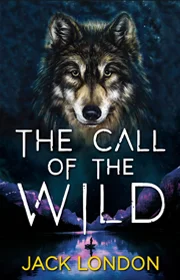
“The Call of the Wild” by Jack London is a classic adventure novel that follows the journey of Buck, a domesticated dog living a comfortable life in California. His life takes a dramatic turn when he is stolen and sold into the harsh world of the Yukon during the Klondike Gold Rush. As Buck adapts to the brutal realities of the wild, he undergoes a profound transformation, rediscovering his primal instincts and ancestral connections. The novel explores themes of survival, the clash between civilization and the wilderness, and the indomitable spirit of the wild. Buck’s gripping odyssey is a timeless tale of resilience and the untamed forces of nature.
Read The Call of the Wild Flipbook:
Listen to The Call of the Wild Audiobook:
Title: The Call of the Wild
Author: Jack London
Publication Year: 1903 (as a serialized work), 1903 (published as a novel)
Genre: Adventure fiction
Setting: Primarily in the Yukon during the Klondike Gold Rush
Protagonist: Buck, a domestic dog
Plot: Buck’s journey from a comfortable domestic life in California to the challenging and wild environment of the Yukon; explores themes of survival, instinct, and the clash between civilization and the natural world.
Key Elements: Adventure, wilderness, primal instincts, human-animal relationships.
Legacy: Considered a classic of American literature, the novel continues to be widely read and studied, exploring the enduring allure of the untamed and the call of the wild.
Inspiration: Jack London drew inspiration for “The Call of the Wild” from his own experiences in the Klondike Gold Rush and his observations of the relationship between humans and dogs in the harsh northern environments.
Dogs as Characters: The novel uniquely tells the story from the perspective of a dog, Buck, making it one of the early examples of anthropomorphism in literature.
Best-Selling Work: “The Call of the Wild” is Jack London’s most popular and best-selling work. It has been translated into numerous languages and adapted into various films and stage productions.
Serial Publication: The novel was first serialized in The Saturday Evening Post in 1903 before being published as a complete book later that same year.
International Popularity: The book gained widespread popularity not only in the United States but also internationally, becoming one of the most widely read American novels.
Film Adaptations: Numerous film adaptations have been made, starting as early as 1923. The most recent film adaptation as of my last knowledge update in 2022 was in 2020, starring Harrison Ford.
Educational Significance: “The Call of the Wild” is frequently included in school curricula, introducing students to themes such as survival, the brutality of nature, and the impact of the human-animal bond.
Legacy in Environmental Literature: The novel is often discussed in the context of environmental literature, exploring humanity’s relationship with the natural world and the consequences of industrialization.
Influence on Animal Rights: The book’s portrayal of the mistreatment of animals prompted discussions about animal rights and ethical treatment, contributing to the early development of animal welfare movements.
Literary Style: Jack London’s vivid and naturalistic writing style, portraying the raw beauty and brutality of the wilderness, is a hallmark of the novel and reflects his interest in the philosophy of Nietzsche and Darwinian theories.